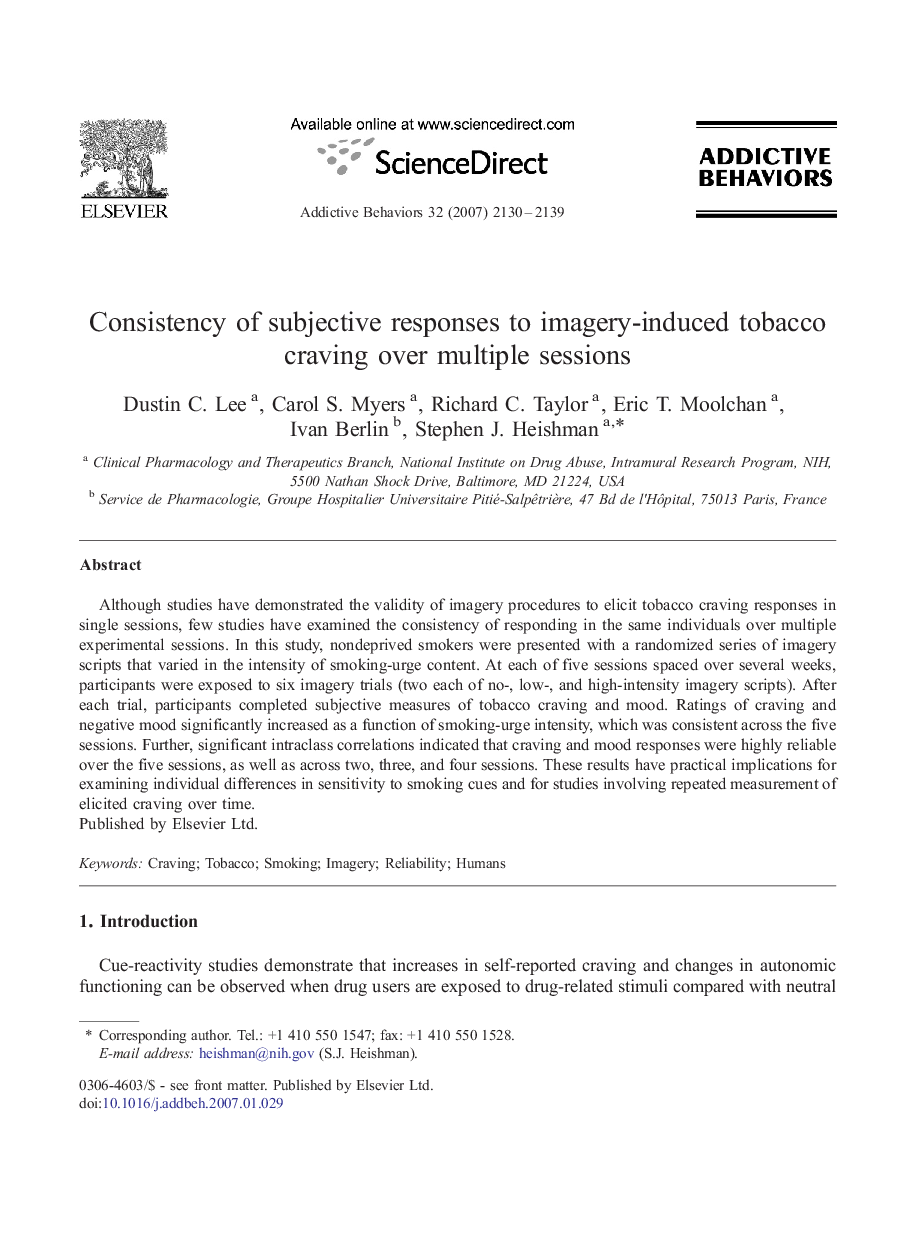| Article ID | Journal | Published Year | Pages | File Type |
|---|---|---|---|---|
| 900131 | Addictive Behaviors | 2007 | 10 Pages |
Although studies have demonstrated the validity of imagery procedures to elicit tobacco craving responses in single sessions, few studies have examined the consistency of responding in the same individuals over multiple experimental sessions. In this study, nondeprived smokers were presented with a randomized series of imagery scripts that varied in the intensity of smoking-urge content. At each of five sessions spaced over several weeks, participants were exposed to six imagery trials (two each of no-, low-, and high-intensity imagery scripts). After each trial, participants completed subjective measures of tobacco craving and mood. Ratings of craving and negative mood significantly increased as a function of smoking-urge intensity, which was consistent across the five sessions. Further, significant intraclass correlations indicated that craving and mood responses were highly reliable over the five sessions, as well as across two, three, and four sessions. These results have practical implications for examining individual differences in sensitivity to smoking cues and for studies involving repeated measurement of elicited craving over time.
